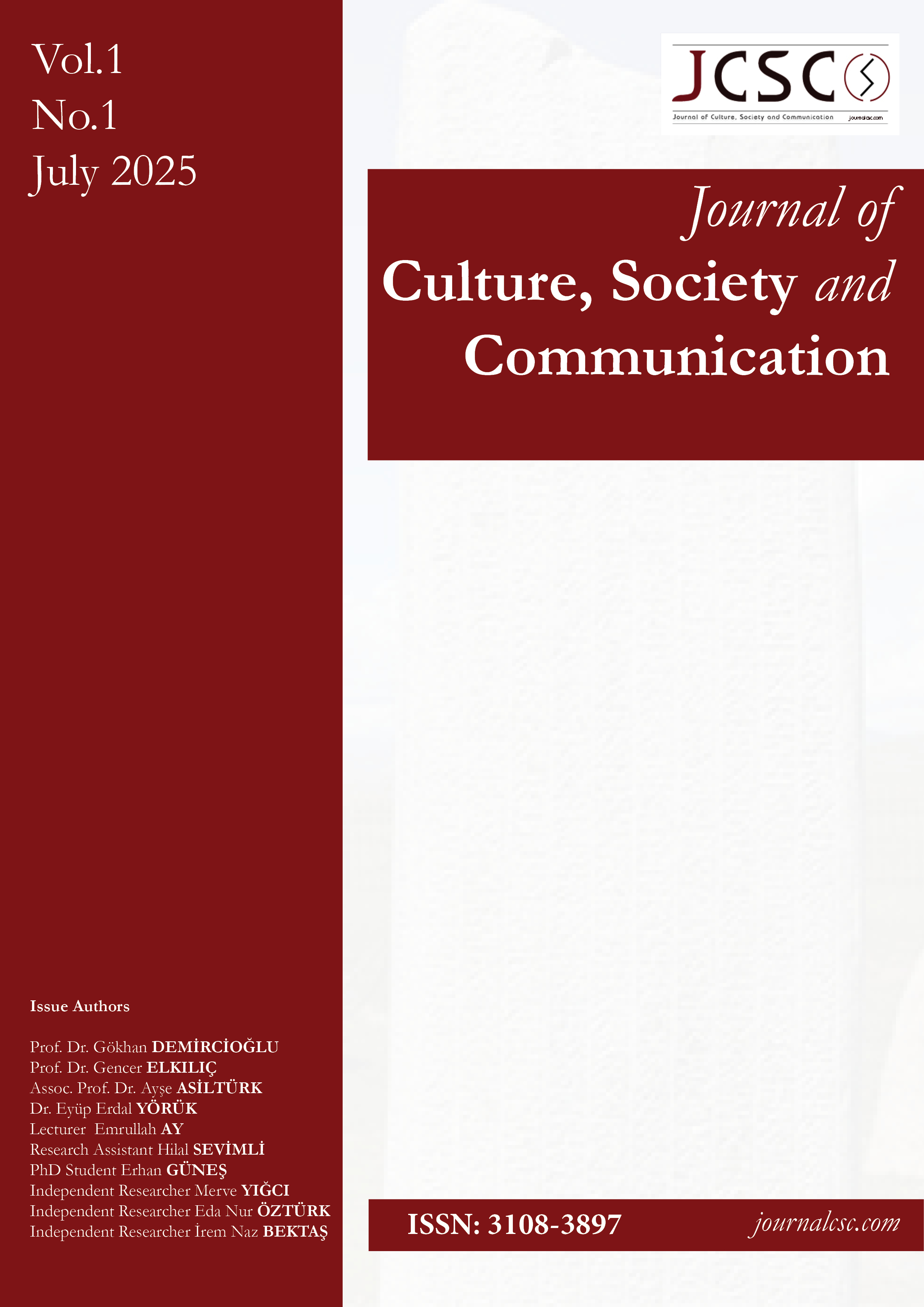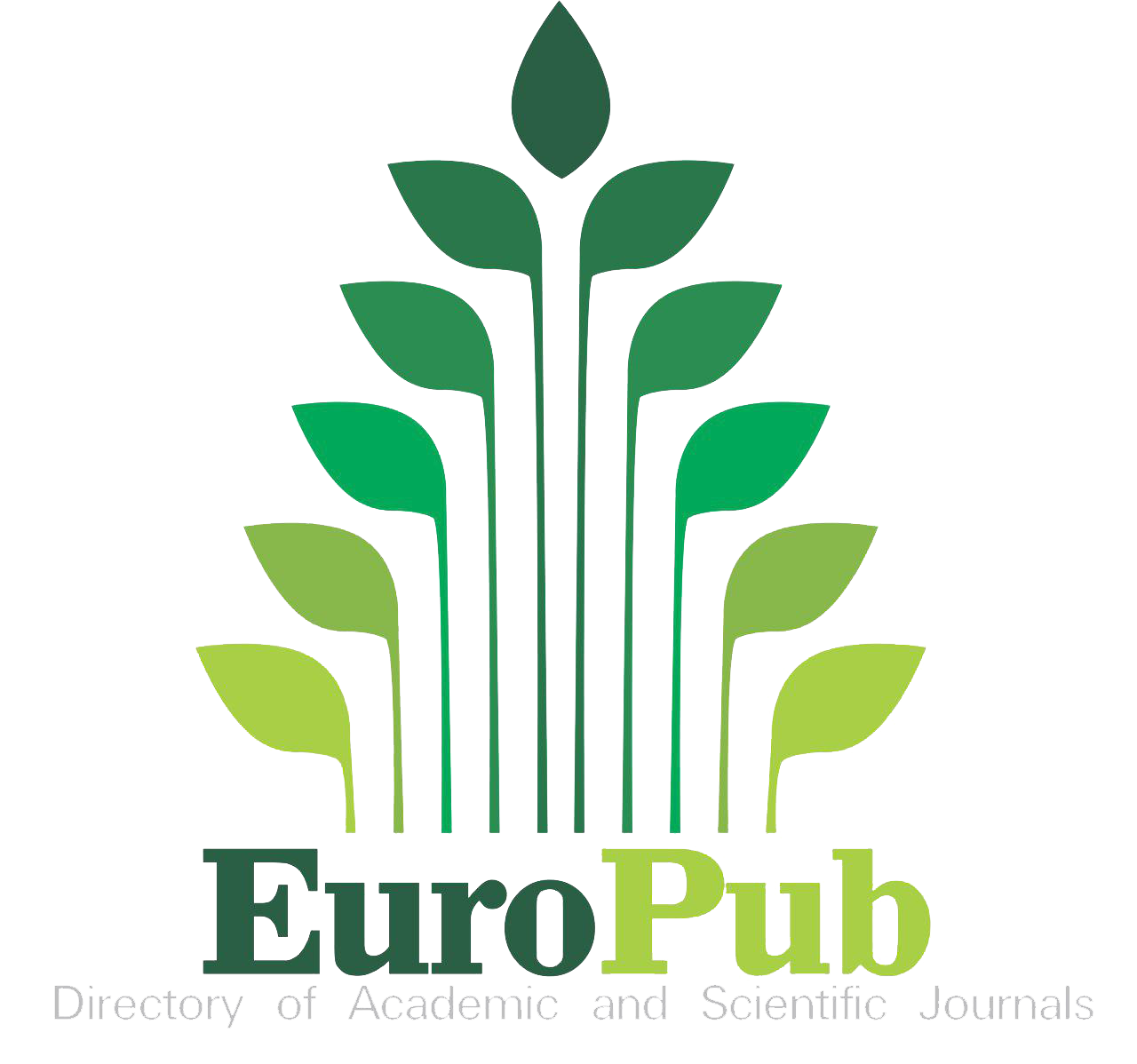Semiotic Approaches and Strategies in Political Communication
DOI:
https://doi.org/10.5281/zenodo.15976455Keywords:
Political communication, semiotics, propaganda, discourse analysis,Abstract
Political communication plays a central role in modern democratic processes in terms of influencing voter behavior, forming public opinion and disseminating ideological messages. In this context, the semiotic approach offers a powerful tool for analyzing the language, images and symbols of politics. Semiotics encompasses a multi-layered process of signification that includes not only linguistic signs but also visual, auditory and spatial elements.
This study examines semiotic approaches and strategies used in political communication, examining leader image, propaganda techniques, political discourse analysis and political representations through the media. In particular, the effects of indicators such as discourse, rhetorical figures, metaphors, colors, symbols and body language used by political actors on voter perception are evaluated. It focuses on how visual and linguistic signs shape voter perception and through which semiotic codes political messages are conveyed. It also examines the semiotic strategies used in election campaigns and crisis management processes and discusses how they are used to manipulate public opinion, construct identity and discredit opponents.
The study approaches political communication not only as a process of message transmission, but also as a practice of meaning production intertwined with cultural and social codes. Accordingly, the semiotics of political campaigns, leader discourses and public policies are analyzed.
References
Arackal, F. (2015). Semiotics and media content. The Symbolic World: Construction and Deconstruction Ed. S. Sekar Sebastian. Asian Trading Corporation, 95-110.
Berlanga-Fernández, I., & Reyes, E. (2024). The digital approach to semiotics: A systematic review. Text & Talk, 44(1), 119–140.
Berk, Y., & Yıldırım, K. (2015). Yapısalcılık ile Post-Yapısalcılık Bağlamında Dil ve Metinden Anlam Kurma. Okuma Yazma Eğitimi Araştırmaları, 3(2), 39-45.
Borţun, D., & Purcarea, V. L. (2013). Marketing and semiotic approach on communication: Consequences on knowledge of target audiences. Journal of Medicine and Life, 6(1), 103.
Çanakpınar, B., Kalelioğlu, M., & Günay, V. D. (2024). Political discourse and semiotics. Chinese Semiotic Studies, 20(2), 255–272.
Doom, J. K. (2016). Decoding the candidates: A semiotic analysis and literacy guide to graphic design principles in political campaign branding (Yüksek Lisans Tezi). Georgetown University, Faculty of the Graduate School of Arts and Sciences.
Farkas, X. (2023). Visual political communication research: A literature review from 2012 to 2022. Journal of Visual Political Communication, 10(2), 95–126.
Grebelsky-Lichtman, T., & Katz, R. (2020). Gender effect on political leaders’ nonverbal communicative structure during the COVID-19 crisis. International Journal of Environmental Research and Public Health, 17(21), 7789.
Han, Y., Peng, Z., & Chen, H. (2022). Bibliometric assessment of world scholars’ international publications related to conceptual metaphor. Frontiers in Psychology, 13, 1071121.
Ibrahim, I., & Sulaiman, S. (2020). Semiotic communication: An approach of understanding a meaning in communication. International Journal of Media and Communication Research, 1(1), 22–31.
Lakoff, G., & Johnson, M. (2008). Metaphors we live by. University of Chicago press.
Madisson, M.-L., & Ventsel, A. (2020). Semiotic conflicts in strategic communication. Routledge.
Manki, K. (2015). Semiotics analysis for the 18th presidential election campaign publications. Indian Journal of Science and Technology, 8(S9), 384–392.
Mubarak, A. S., & Aayid, D. (2022). A semiotic approach to some internet political comic memes. Journal of Positive School Psychology, 9192–9198.
Mukarom, Z. (2022). Political communication strategies to increase the opportunity of women’s political representation in Indonesian parliament. Journal of International Women’s Studies, 23(1), 279–293.
National Museum of American Diplomacy. (t.y.). The skills of diplomacy. https://diplomacy.state.gov/discover-diplomacy/the-skills-of-diplomacy/ adresinden 14.02.2025 tarihinde alındı.
Osterroth, A. (2018). Semiotics of internet memes.: https://www.researchgate.net/publication/319236833_Semiotics_of_Internet_Memes adresinden 10.02.2025 tarihinde alındı.
Ozer, A. L. (2023). Women experts and gender bias in political media. Public Opinion Quarterly, 87(2), 293–315.
Prasetya, R. (2024). Analyzing political discourse: Linguistic and semiotic perspectives. Journal of Political Sciences & Public Affairs, 12(1).
Solik, M. (2014). Semiotic approach to analysis of advertising. European Journal of Science and Theology, 10(1), 207–217.
Soukup, P. A. (2014). Political communication. Communication Research Trends, 33(2), 3–43.
Stieglitz, S., & Dang-Xuan, L. (2013). Social media and political communication: A social media analytics framework. Social Network Analysis and Mining, 3, 1277–1291.
Subekti, D., Mutiarin, D., & Nurmandi, A. (2023). Political communication in social media: A bibliometrics analysis. Studies in Media and Communication, 11(6), 299–313.
Van der Pas, D. J., & Aaldering, L. (2020). Gender differences in political media coverage: A meta-analysis. Journal of Communication, 70(1), 114–143.
Yopak, J. A. (2018). The meme as post-political communication form: A semiotic analysis. UVM Honors College Senior Theses, 263.
Zhao, X., Zheng, Y., & Zhao, X. (2023). Global bibliometric analysis of conceptual metaphor research over the recent two decades. Frontiers in Psychology, 14, 1042121.
Downloads
Published
How to Cite
Issue
Section
License
Copyright (c) 2025 Erdal YÖRÜK, Erhan GÜNEŞ

This work is licensed under a Creative Commons Attribution 4.0 International License.







